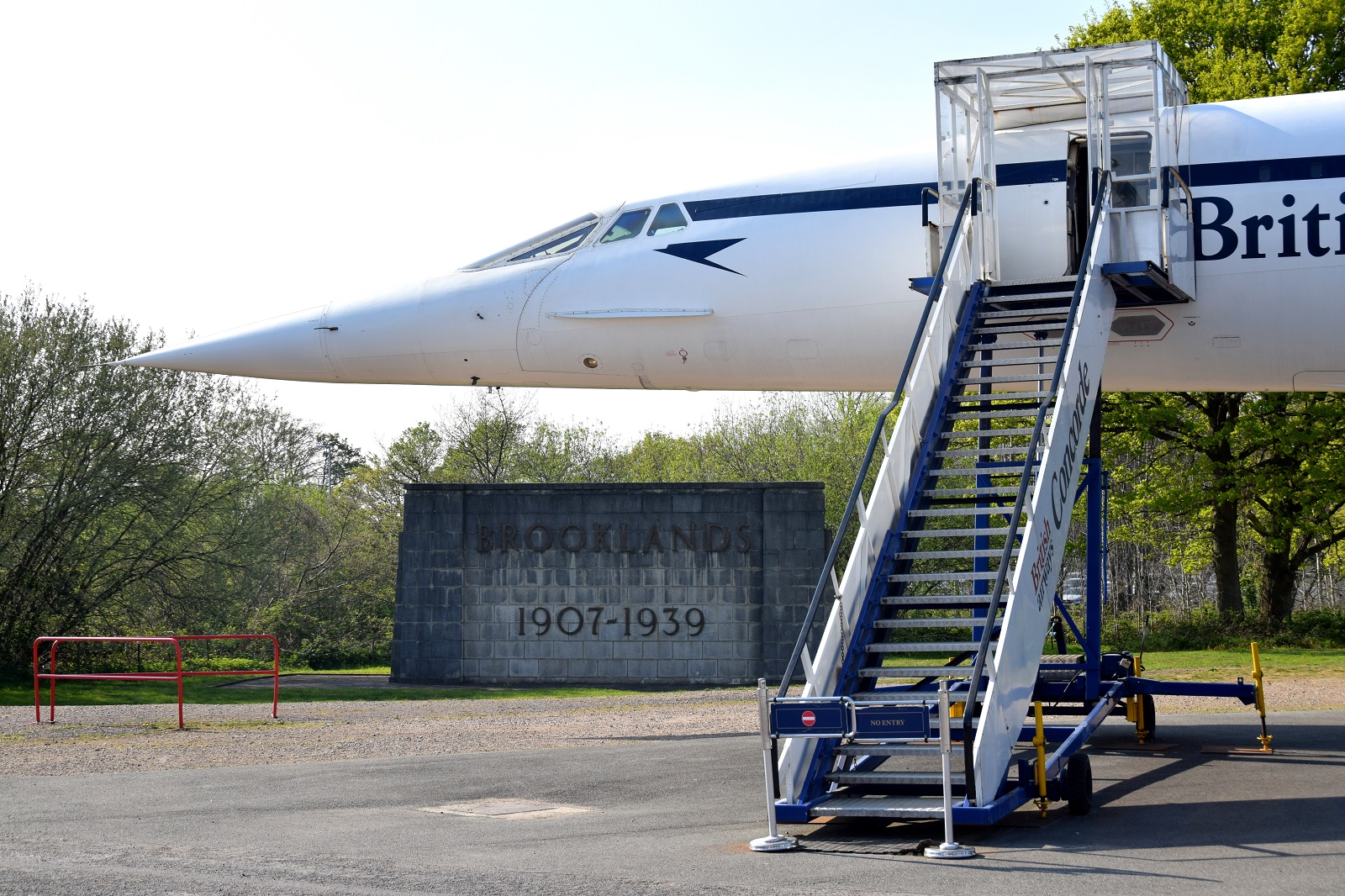On July 6, 1987, a Vickers VC-10, fitted out to transport the Sultan of Oman and his entourage in unabashed luxury, made its last ever landing. It touched down on the runway at Brooklands, taxied to its final resting place and has been displayed there ever since.
Just under 33 years prior to then, it had made its first ever flight from that same runway, having been built in the Vickers factory just next to it. Its ‘coming home’ after over three decades, long after aircraft manufacturing had ceased at Brooklands, is delightfully poetic and, for this poor sad sop, quite moving. The Brooklands name is one that rings a bell with aviation and motorsport enthusiasts the world over, and is well worthy of a pilgrimage, being quite unlike any stuffy, patronising museum I’ve ever visited.

Evolution on wheels and wings
The image of Cobb’s Napier Railton seemingly levitating above Brookland’s steeply banked surface has come to define the iconic former racing circuit in Southeast England, but there’s far more to it than that. It was, of course, founded with motorsport in mind – there was, indeed, no purpose-built motor racing venue in Britain until the stupefyingly wealthy Hugh and Ethel Locke King thought to amend the situation. Air-races and flight demonstrations played very much second fiddle to car and motorcycle racing in the beginning, but it was the advent of WWII that brought an end to motorsport at Brooklands, and gave aviation the upper hand.
Aircraft had been built at Brooklands since before WW1, but production intensified dramatically during WWII, with Vickers Wellington Bombers and Hawker Hurricanes among the types built here in their thousands. With that construction infrastructure in place, and remaining serviceable despite frequent bombardment in the intervening years, manufacturing continued after the war’s end with the emphasis now placed on civilian types. In fact, it wouldn’t be wrong to say that the 1950s and 60s were something of a boom era for productivity at the old Vickers plant.
Whereas the sound of W-12 and straight-eight racing cars had reverberated off the banking pre-war, it was the whistle and roar of turbojets that dominated the ‘50s, with the Vickers Viscount emerging from Brooklands as the first turboprop-powered airliner to take to the sky. Naturally, there’s one preserved here, as is there the larger Vickers Vanguard that followed. The VC-10 – the biggest jet airliner ever built in Britain – is well represented, too, by the Omani plane I opened with, as well as the fuselage of an ex-British Airways bird.

Speedbird
As you enter and stroll past sheds full of Bentleys, Alfas, Rileys and, of course, a Napier-Railton, it’s the sight that awaits around the next corner that’s most likely to stop you in your tracks. Here, a Concorde rests, nose towards the sun and navigation lights blinking as if ready to set off once again.
The Brooklands Concorde wasn’t ever employed in revenue-earning service, but – as one of the final pre-production machines – was the first aircraft to ever carry 100 passengers at twice the speed of sound. That’s enough to give it a VIP presence in the history books, and the fact that more Concorde components came out of the Brooklands factory than any other secures it a well-earned spot as the museum’s centrepiece.
“Museum”, though, is an unfortunate word. It implies age, dustiness and obsolescence, whereas Concorde, despite its dotage, remains unequalled as a civil aviation achievement. Fittingly, it’s presented as a ‘Concorde Experience’, whereby you get a ‘boarding pass’ for your booked appointment and a post-flight certificate afterwards. At your allotted departure time, you meet in a British Airways airport shuttle, from which you’re escorted by a phenomenally knowledgeable and personable guide (Justin, in our case), given an exterior tour and technical briefing and then welcomed aboard via the luggage hatch. Here, you can watch videos about construction, flight and restoration, as well as gaze at artefacts from the plane’s storied past.

But then it’s time for the main event: your “flight” on Concorde. Those who are able to suspend disbelief will really enjoy parting the curtain and walking into Concorde’s forward cabin, before taking a seat and experiencing the sounds of take-off and the brief nudge that marks your breaching the sound barrier. You don’t actually go anywhere, any feeling of flight is provided by vibrating transducers at the seat bases. But you’re sitting on actual Concorde seats, looking through actual Concorde windows, and enjoying the same interior ambience as those lucky enough to have flown supersonic for real.
Exhibits with a pulse
And it’s this sense of realism that, for me, makes Brooklands different. I mentioned that Concorde’s navigation strobes blink away, and its landing lights and cabin illumination is functional, too – they’ve even replicated the digital cabin display that told passengers of current Mach number and altitude.
Climb aboard any of the other aircraft on display, too, and you’ll find certain cockpit circuits powered up, as if the plane was idling between duties. I took the helm of the Vanguard, and only the zero readings for fuel, hydraulic pressure and engine revs gave the game away that this bird was grounded forever.
It was enough to elevate Brooklands way beyond the sanitized scrapyards that so many museums can resemble. Such attention to detail creates an impression that these are still living, breathing, machines, and that their existence is as vital to the future as they are to history.
[Images copyright Hooniverse 2019]


Leave a Reply